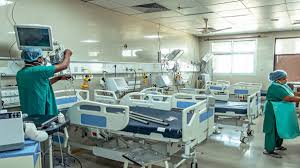Need to take Super Specialty Healthcare Beyone Metro Cities
Bridging the healthcare divide and improving access to super-specialty medical services in Tier II, Tier III, and rural areas of India is a pressing need that requires a determined effort from the government, healthcare providers, and stakeholders.
Bridging the healthcare divide and improving access to super-specialty medical services in Tier II, Tier III, and rural areas of India is a pressing need that requires a determined effort from the government, healthcare providers, and stakeholders. While the country has made significant strides in its healthcare system, this progress is still out of the reach for the majority of the population residing outside of metro cities. A visionary and planned approach is the need of the hour to address this huge healthcare gap. Brownfield investments can be a viable solution, where established healthcare institutions in metro cities purchase or lease existing facilities in smaller cities and upgrade them. This approach allows for quick results and mitigates the challenge of poor infrastructure in Tier II and Tier III cities. In contrast, the Greenfield approach, which involves building new facilities from scratch, requires significant initial investments and more time. Advantages of super-specialty services in smaller cities Bringing super-specialty medical services to Tier II and Tier III cities offers several advantages. Firstly, it reduces the burden on metropolitan hospitals, which are often overwhelmed with patients from smaller cities. By providing specialized services locally, metropolitan hospitals can focus on complex cases and critical emergencies, improving the quality of care for all patients. Moreover, enhancing access to early diagnosis and treatment through super-specialty services can significantly improve patient outcomes and reduce healthcare costs. Prompt medical attention in these cities can lead to early intervention and successful treatments. The establishment of super-specialty services can also act as a catalyst for regional development. It creates job opportunities for healthcare professionals, generates employment for local communities, and attracts investment in healthcare infrastructure, hospitality, pharmaceuticals, and medical tourism. This comprehensive growth benefits the entire region and contributes to the overall well-being of the community. Addressing regional disparities in healthcare is another crucial outcome of providing super-specialty services in Tier II and Tier III cities. It helps bridge the urban-rural divide, leading to positive health indicators, reduced mortality rates, and improved community well-being. By ensuring equal access to quality healthcare, the disparities between urban and rural areas can be narrowed. Expanding super-specialty medical services beyond metropolitan areas also strengthens medical education and research. Developing robust infrastructure for medical education and research in Tier II and Tier III cities encourages local talent and expertise, as aspiring doctors and researchers can remain in their home regions. This, in turn, contributes to the overall growth and development of these areas. In summation, bridging the healthcare divide and providing super-specialty medical services in Tier II, Tier III, and rural areas of India is essential for creating a more equitable healthcare system. Through brownfield investments, the burden on metropolitan hospitals can be reduced, early diagnosis and treatment can be enhanced, regional disparities can be addressed, and medical education and research can be strengthened. This comprehensive approach will contribute to the overall well-being and development of communities across the country. Let’s make India healthy and happy!
